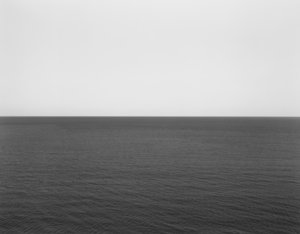 |
| Jean-Auguste Dominique Ingres, Odalisque in Grisaille, c. 1824-34 |
This small exhibition in the National Gallery’s temporary
exhibition space is both exquisite and somewhat perplexing. It is a treat to
see some of the precious paintings on display, many of which I have not seen in
exhibition before. However, there is not much coherence to the works that are
displayed in roughly—though not consistently—chronological order.
 |
| Stained Glass Panel with Quarries and a Female Head, c. 1320-24 |
On entering, we recognize that Monochrome. Painting in Black and White is an exhibition of works that
are not all painted, neither are they all black and white, nor are they consistently
monochrome. Thus, if the somewhat misleading title is not the point of coherence,
what is? Unfortunately, the colour itself does not create strict continuity, because grey comes in so many different shades, tones and hues. In addition to the fact that
the works are not all black, white and/or grey, and very few are monochrome,
it becomes obvious as we walk around that colour itself is unreliable.
Thus, one of the most extraordinary works on display is the Genoa altarcloth, Agony in the Garden, 1538 which is, in
fact, oil on blue linen. And the porcelain skin on the back of one of the most
famous grey paintings, Ingres’s Odalisque
in Grisaille (c. 1824-34), is highlighted in shades of red. Indeed, it’s
highly unusual to find paintings that are entirely executed in a grey palette. And
of course, this is what makes grey (as opposed to black and white) fascinating:
grey is always shifting to the human eye, often because it is mixed with other
colours, and even when it is on the scale between black and white, it is never a singular.
Thus, in another painting that is central to the history of grey
painting, Josef Albers’s Study for Homage
to the Square (1965), the interest of the work is compromised because it
sits on a wall by itself. The point of Albers’s colour studies is to highlight
the optical effects of the area covered by a colour and its interaction with
that surrounding it, next to it, or behind it. That is, we see the individual
grey squares as different sizes depending on what is next to them. And when
there is only one study as there is here, the comparative effect is lost on the viewer.
 |
| Andrea Mantegna, The Introduction of the Cult of Cybele at Rome, 1505-06 |
And what of the different media that are displayed? It’s clear to me why the curators have chosen
works in glass, metalpoint, ink, pen and engraving. Because these were the
media used for some of the developments in grey, black and white image making
from the Renaissance on. However, the rationale for the inclusion of prints is
never made clear to the visitor. Which
is not to detract from the fact that there are some marvellous works—including a stained glass panel from 1320. However, together with the diversity and historical reach of
the exhibition, these examples muddy rather than clarify the larger
perspective.
The final room has at its centre Malevich’s Black Square (another of the gallery’s
great coups on loan from the Tretyakov Gallery in Moscow). The Black Square was among the paintings
that changed the course of Western art history in 1929. Here in the final room,
focused on the theme of “Abstraction in Black and White,” opposite Malevich is a minor
Jasper Johns painting, and it is surrounded by works as varied as Stella’s Tomlinson Court Park I (1959), two Cy
Twomblys, Bridget Riley’s Horizonatal
Vibration (1961) and others. It is thus centrally placed, but its
influence is lost because it is surrounded by works that are only related by their colour palettes.
Ultimately, while the exhibition is to be applauded for
bringing these works together, and for shining the spotlight on black, white,
grey, blue and brown, it would have been lovely if it had given a sense of what is
so special and intriguing about these colours. More coherence and logic would
have gone some way to showing us why we should care about them.






